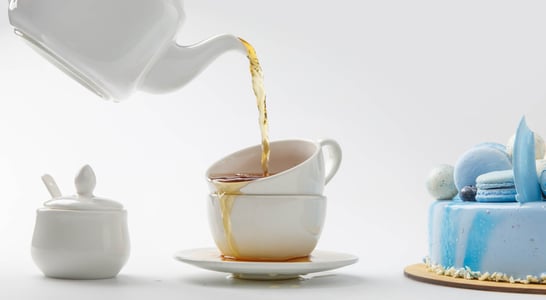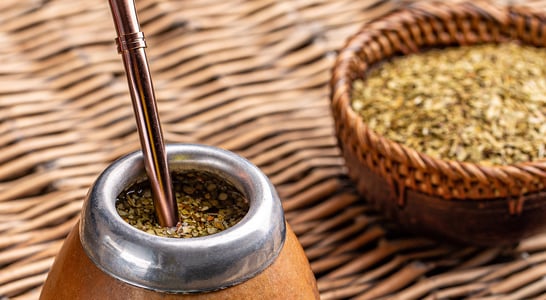
International Tea Day
While everyone loves a cup of tea, many of the workers and producers of that tea face poor conditions and pay. Help raise awareness and keep tea fair.
The tea industry provides millions of people around the world with cups of tea in the morning. One of the biggest producers of tea, India, recognizes the importance of tea in its communities and as a commodity for commerce.
However, much of the working conditions for those within the tea industry still need much improvement. If you thought this holiday was about drinking tea, well think again! International Tea Day is all about the tea workers and bringing civil rights into action. Let’s see how this holiday came to pass.
Do you love a good cup of tea? While International Tea Day can certainly involve paying homage to tea, we should pay homage to those working in the tea industry. The best way to do this is by helping to raise awareness regarding their working conditions so they can be improved.
How to Celebrate International Tea Day
Learn About Your Favorite Tea Companies
If you’re a lover of tea, then do some research about some of your favorite companies. Try looking up tea brands that support fair trade, and possibly switch to those brands to make a difference in the way you buy products such as tea. Use the day’s hashtag to help recognize it as an official holiday and educate others about the tea industry if you’re interested.
Try a New Kind of Tea
You could also use International Tea Day to try a variety of tea you have never had before. Whether it is Rooibos tea from South Africa or an herbal tea blend from some other part of the world, get excited about this day by leaning into some new tastes in brewed tea.
Bake with Tea
Why not make some delicious baked green tea treats on International Tea Day and have a bake sale to raise money and awareness regarding working conditions in the tea industry? Green tea recipes are available in their abundance. People are actively searching for different ways to enjoy green tea. While green tea is delicious when simply mixed with hot water, there is nothing wrong with switching it up from time to time, especially on International Tea Day!
Host a Whimsical Tea Party
Invite friends and family for a charming tea gathering. Encourage guests to don vintage attire, creating an ambiance reminiscent of classic tea times. Serve a variety of teas accompanied by an assortment of pastries and finger sandwiches. This setting fosters delightful conversations and shared enjoyment.
Create Tea-Inspired Art
Unleash your creativity by crafting art inspired by tea. Paint or sketch your favorite teapot, design tea-themed greeting cards, or experiment with tea leaf reading illustrations. This artistic endeavor adds a personal touch to your celebration.
Share Your Tea Moments Online
Capture your tea-filled moments and share them on social media platforms. Use hashtags to connect with fellow enthusiasts worldwide. Sharing your experiences can inspire others to join in the celebration.
History of International Tea Day
The history of Tea Day dates back to actions taken by folks in New Dehli in 2005. The event was started to raise awareness about the needs of those working in the tea industry, and it was celebrated on December 15 of that year. The following years saw national Tea Day events grow into other places like Sri Lanka, Nepal and additional tea-producing countries, happening alongside the growth of GlobalTea Conferences initiated by trade unions.
International Tea Day was officially declared by the United Nations General Assembly in December 2019, and an even larger celebration took place on an international level the following May. Its purposes were in alignment with different UN sustainability goals, such as the reduction of extreme poverty, the empowerment of women and the sustainable use of terrestrial ecosystems.
International Tea Day Timeline
2737 BC
Tea is discovered as a beverage
Legend has it that Chinese Emperor Shen Nung is sitting beneath a tea tree while a servant boiled water for drinking. Some leaves fall into the cup and begin the practice of drinking what is now called “tea”.[1]
1610
Tea comes to Europe
It is believed that the Dutch were the first to bring tea to Europe, just a few years prior to the introduction of coffee by Venetians.[2]
1773
The Boston Tea Party occurs
With the intention of revolting against the high taxes levied by the British government without providing any voice, residents of Massachusetts throw tea into the Boston Harbor. “No taxation without representation” is the major complaint.[3]
2004
International Tea Day is created
At the World Social Forum, International Tea Day is conceived and then celebrated the following years in New Delhi and Sri Lanka, then later in other tea-producing places like Nepal, Viet Nam, Bangladesh and others.[4]
2019
United Nations adopts International Tea Day
After some years of advocating for its observance, International Tea Day is adopted by the United Nations General Assembly at the suggestion of the FAO Intergovernmental Group on Tea.[5]
Bonus: Learn About Matcha Tea
Matcha is highly popular as of late. You need to shop with care, though! The first thing you need to take a look at is how the Matcha has been produced and sourced. Ensure that all veins and stalks have been removed so that there is not any bitterness and only the finest leaves should be used.
Secondly, the color of the matcha powder is a significant factor. The greener the color is, the better. This is because the leaves are forced to overproduce chlorophyll because Matcha is shade-grown, which causes the vibrant green shade.
If the Matcha is yellow or brown in color, this is a sign that the leaves have not been properly shaded or that branches and stalks have been included. The price is the third factor to consider. Like most things, if you want quality, you can expect to pay a little bit more. If something seems too good to be true, the chances are that it is.
The feel of Matcha is also important. It should be a fine powder that is very silky. Last but not least, the taste is obviously a crucial attribute when it comes to quality. It should have a clean and naturally sweet taste!
Ideas for Baking with Tea
An easy and delicious recipe is Matcha Meringue Kisses. To make this you will need Matcha, sugar, egg whites, and powdered sugar. Begin by sifting together the Matcha and the powder sugar, and then whip the egg whites until they have soft peaks. Gradually add the sugar and whip until stiff peaks. Gently fold the Matcha into this mixture and then transfer to a pastry bag. Pipe the mixture into small kisses onto a baking tray and then bake for around an hour.
Or, why not make Green Tea Donuts? For this, you need green tea, honey, melted butter, milk, egg, salt, baking powder, sugar, and cake flour. You whisk the green tea, salt, baking powder, sugar, and flour. Add the honey, melted butter, milk, and egg, and then whisk. Use a pastry bag to pipe the batter into the mould. Then, simply bake the donuts for eight minutes. You can make your own glaze to go on the top – chocolate goes well!
Other delicious baked treats to try include green tea muffins, brownies and shortbread!
International Tea Day FAQs
What is International Tea Day?
Created to celebrate and pay tribute to the countries that produce tea to supply to the world, starting in India and moving to other places like Sri Lanka, Malawi, Uganda, Bangladesh, Vietnam and more.[1]
When was International Tea Day first celebrated?
International Tea Day first got its start in 2004 when it was celebrated in New Delhi. It grew over the years and by 2019 the day was adopted by the United Nations General Assembly.[2]
How to celebrate International Tea Day?
A great way to observe this day is by learning a bit more about the nations who produce tea for the world. Also, don’t forget to order a cup of fair trade tea for one, or take a friend out to enjoy a cuppa together.[3]
What is the theme of International Tea Day?
The theme for this day devoted to tea producers changes each year, but some of the past themes have included themes such as Tea and Fair Trade or Harnessing Benefits for All from Field to Cup.[4]
When is International Tea Day celebrated?
Taking place on May 21 of each year, International Tea Day originally took place on December 15 from 2005 when it was often only celebrated by tea-producing countries. It changed to May 21 when the UN adopted the day.[5]
Also on ...
View all holidaysWorld Meditation Day
Slow the pace of life for a time and focus on yourself. By meditating, you can reduce stress, improve brain function and well-being, and get a break from daily life.
National Talk Like Yoda Day
Feel the force flow through you as you speak like Yoda! With his unique, backwards-grammar style, this legendary Jedi master is the epitome of quirky cool. So channel your inner Yoda and let the wisdom of the force guide your words.
World Day for Cultural Diversity
The blending of customs, beliefs, and traditions creates a vibrant tapestry of perspectives, enriching societies worldwide.
Global Accessibility Awareness Day
Join an event or webinar, and engage in the discussion of how to make the internet more accessible to all, including a wide range of disabilities and limitations.
We think you may also like...
National Cream Tea Day
Learn how to make scones and clotted cream, and enjoy your very own British tea time. Gather some friends for afternoon tea on National Cream Tea day.
International Rooibos Day
An aromatic brew from South Africa, known for its rich, earthy flavor and a comforting warmth in every sip.







